#Chef's Table
Text

The Albatross is the largest bird that can go years without landing. They spend their first 6 years of life flying over the ocean before coming to the land to mate. It is capable of traveling more than 10,000 miles in a single journey and circumnavigating the globe in 46 days.
[A Picture Is Worth 1000 Words]
* * * *
“Creativity and ego cannot go together. If you free yourself from the comparing and jealous mind, your creativity opens up endlessly. Just as water springs from a fountain, creativity springs from every moment. You must not be your own obstacle. You must not be owned by the environment you are in. You must own the environment, the phenomenal world around you. You must be able to freely move in and out of your mind. This is being free. There is no way you can’t open up your creativity. There is no ego to speak of. That is my belief.”
—Zen Buddhist nun, Jeong Kwan,
CHEF’S TABLE, S03E01
24 notes
·
View notes
Text
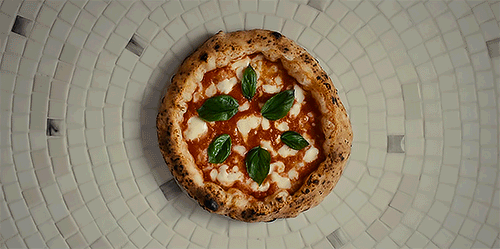
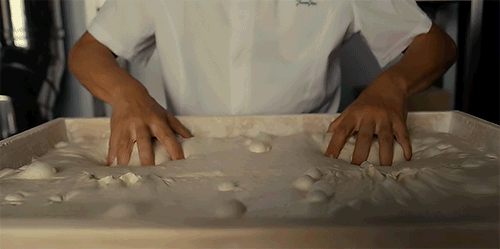





Chef's Table: Franco Pepe - Pepe In Grani
#chef's table#chef's table pizza#netflix series#pizza napoletana#neapolitan pizza#food gifs#alt text#go look at some beautifully shot pizza and maybe you'll calm down#honestly I was hypnotized while making these#g
33 notes
·
View notes
Photo

Chef’s Table: a Kamisama Kiss story
Ch4/4: Nanami.
is online!
Summary: As Nanami makes her dinner for the night, she thinks back on the sushi dinner she had a week ago, and how entirely unfair it all was.
My dearest @ruddcatha!!! We have done it! We bring you a complete KH story for your birthday! It was so much fun stretching my brain to write outside of my wheelhouse, and I hope you like the conclusion to the story of Tomoe the Sushi Chef! It was an absolute ball writing it for you my dear.
#kamisama hajimemashita#kamisama kiss fanfiction#tomoe x nanami#happy birthday rudd!#chef's table#complete fic
16 notes
·
View notes
Text
if you want to feed your soul, i beg you to watch Chef's Table and see the passion in people to preserve their heritage, to cook with love, to feed the world.
#chef's table#food is love#cooking is love#genuinely i sit here crying watching chef's table because they CARE#they care SO deeply
1 note
·
View note
Text
GoGo Penguin Interview: Opening Up and a Leap of Faith

Photo credit: Veil Projects, Emily Dennison
BY JORDAN MAINZER
You can take GoGo Penguin’s latest album Everything Is Going to Be OK (Sony/XXIM) at face value, and it’ll appear like a continuation of the spirit of their previous material. Moody, abstract, and expressive, songs like “You’re Stronger Than You Think”, “Glow”, “An Unbroken Thread of Awareness”, and “Sanctuary” have a blissful vibe, whether arpeggiated or gentle, free or groovy, affected or minimal. In reality, the circumstances surrounding the record give it a life-affirming quality that’s never been stronger for the Manchester trio. Everything Is Going to Be OK was recorded during a time when Nick Blacka lost both his mother and brother to cancer months apart, and Chris Illingworth lost his grandmother. In the meantime, drummer Rob Turner left amicably, and was replaced by Jon Scott. Yet, the sound of the album doesn’t reflect any tension or upheaval; though times were tough, the very act of writing, making, and recording acted as a refuge for GoGo Penguin.
That is, with the album’s story in mind, you can appreciate its gracious looseness. “Saturnine” is straight up funky, a mix of bass, piano trills, and pattering drums. The warbling synth in the background of “Friday Film Special” perfectly perches beside its slow pace, like the very birds on a wire that make up the record’s visual palate. The Steve Reich-like peaks and valleys of the title track render it the album’s emotional centerpiece, the complex time signatures of “Parasite” its emotional climax, but even those two tracks exist within a defined world of echoes and familiarity, just like the very studio that acted as a safe space for Blacka and Illingworth during tough times.
Earlier this month, I spoke over Zoom with Illingworth as GoGo Penguin were in the middle of a U.S. tour, that night in Portland. We talked about playing live, both in general and the songs from the new album, what Scott brings as a drummer and band member, and being open about sharing the stories behind music. Read our conversation below, edited for length and clarity.
Since I Left You: How are you finding adapting the Everything Is Going to Be OK songs to a live performance?
Chris Illingworth: It sort of feels like something the audience should answer, really. [laughs] To us, it feels great. We’re really enjoying playing the music. It’s nice to be in a position where not only do we have new music but a back catalog to draw from, where we can pick and choose things that support the new music. It’s been fun developing the technology side of [the new album], making sure things translate to the stage and work as a show. Like we try to do with the album, we want to make [the live show] a journey from beginning to end, having people leave the theater feeling like they’ve experienced something pretty cool. It’s been great fun. The response to the new stuff has been really positive. It’s nice to see that because we had to take that leap of faith with this album, where we didn’t want to lose our character or core, but it felt like we needed to do something different. That can go any way possible: People could love it, people could hate it, it could attract a new audience, it could push the old one away. But it seems like fans have stuck with us and enjoy it. It’s hopefully getting some new people interested, as well.
SILY: Do you improvise when playing live?
CI: It’s a mixture. We’ve ended up chatting about this with people quite a lot, because we get labelled as jazz. It’s a tricky one. [Jazz] only describes us to a certain degree. There’s a jazz influence in there, but equal rock, drum and bass, electronica, and classical influences. We just use what we need for the music. [Some songs] we play note for note every single show, if it’s what the track needs. Other times, there are spaces for us to improvise. Tracks like “Break” have a framework, but I’m pretty much improvising from start to finish, and there’s an ending where I’m playing the head at the end of the tune and everything before that is improvisation on the themes that lead to that. It’s different every show. Improvisation is just one of the tools we can use when we need it.
SILY: There’s an obvious undercurrent of loss surrounding this album, and there are aspects of it that are certainly contemplative and mournful. But reading about the context before I dove in for the first time, I was surprised that there’s quite a groove to a lot of songs. It’d be intriguing to hear that live. How do you find occupying the same headspace on stage as you were writing and recording the record? Or do you occupy a different headspace?
CI: Good question. It’s something we think a lot about when recording, how we feel and how the music comes across when we play live and how we can capture that energy on record. That’s been the biggest challenge. We know that when we get out and play it live, we immediately have that physical connection with a crowd. It’s the same space, and everyone is sharing the same energy. On record, it’s quite a personal thing for us. We’ve written the music and try to be honest and dig deep into our experiences to put them into the music. What we try to do is think about it in a more abstract way: What feelings are we trying to convey? We’re not trying to tell a specific story [even though] there are a lot of ideas and experiences behind these tracks. There were a lot of difficult and good things, and we put all of it into the record. Some of it is quite dark and heavy, and some of it is brighter and has hope behind it. That’s where the album title comes in.
When we get into the recording, it’s very personal. We’re in the space as a band, and there’s no one else there to bounce anything off of. You put your face in it and make the record. When we give it to people to listen to, it becomes a personal thing to them. I can’t think of a situation where you get 200-300 people in a room and everybody sits and listens to the CD. [laughs] You sit on your own with your headphones and listen to a record, and it’s a difficult thing to think of how to convey it. We have to treat [recording and live performance] separately, but we always have to think about how we’re going to play [our songs] live. We make the record the best we can make it, in whatever format serves the music best. Live, the consideration is made early on, but we explore how to do it best when [actually] on the stage.
SILY: One of the “good things” that went into this new record is your new drummer, Jon Scott. Sonically, it seems like his work is at the forefront of the record. What does Jon bring to the table different than what you’ve had before?
CI: I think the main difference has been the fact that he recognizes we think about what we’re trying to do sonically with the music, as well. There’s the emotional content and ideas we try to convey, and then there’s how we want it to sound. How do we want the piano to sound? Do we want to adapt the treatment of the piano and do things in post-production to change certain characteristics? Jon has a really good ear for that. A lot of the writing was done by me and Nick for this record--Jon had just joined us. It’s hard for someone to join so new and be an equal contributor in terms of composition, but he had a lot of ideas to bring and a very collaborative way of thinking. “Here’s this music, here’s what I can do as a drummer, but also with these instruments and sounds I’ve got.” One of the best examples is “You’re Stronger Than You Think”. When we play that tune, and there’s an 808-like beat that we play, it’s about treating the drums to make that sound, being able to create things that sound electronic without being electronic, while accompanying the other sounds that are going on. He’s very much a team player that thinks about what he can bring as an individual to serve the band and music. You can tell the record something we all made together. We always think of the band as 3 individuals--4 if you count [Joseph Reiser], our sound engineer--bringing their individual personalities to make something bigger than any of them individually. That collaborative thing, Jon’s fit really well with.
SILY: Are there any older songs he wasn’t a part of that he’s brought something unexpected to?
CI: Yeah! We’ve been playing “Protest” on this show quite a lot. It’s one of our favorites and goes down quite well with fans. It’s a good closer to a show. The type of drums and tuning of the drums that he’s got going on, the original beat just didn’t feel like it was working. It was great to see him adapt while keeping the character and the elements of it that belong to the original. He tidied and cleaned it up, and he let it breathe again even though it’s a heavy tune. He was wary that just plowing in there with loads of floor and loads of kick, it would take up a lot of space. Being the kind of drummer he is, it was interesting to [watch him] listen to it and think, “Let’s take the core of what makes this ‘Protest’ and adapt it.” He’s done that with quite a few tracks. That’s what we wanted. We made it clear right from the beginning that we didn’t want someone to come in and be a copy of Rob. We wanted to someone to be themselves. It’s quite a challenge to join a band that’s got a history, the character we’ve built, the personality people think of when they think of GoGo Penguin’s music. The ability for him to fit in and be a part of the band, he’s really nailed it.
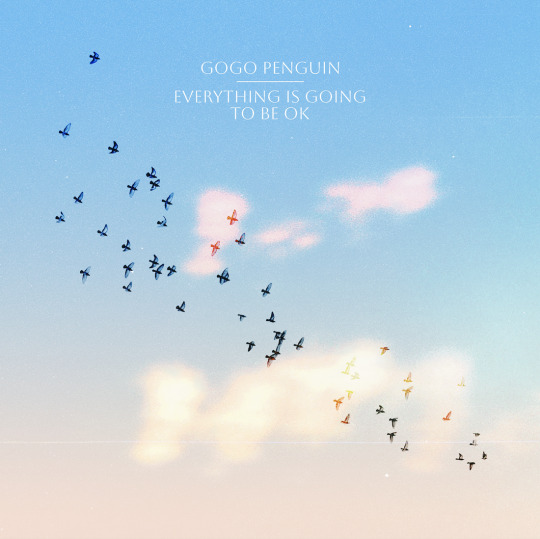
SILY: The record has a lot of emotional peaks and valleys. The title track is the centerpiece for me, and it ends with an acceptance phase with “Sanctuary”. Do you try to do the same thing with the setlist?
CI: Absolutely. We started off with a setlist we thought was pretty solid, and then after a couple shows, we started realizing it wasn’t quite doing exactly what we wanted it to do. It’s about having a start and a finish with the journey in between and how each track should lead to the next. There are a lot of good examples in different genres, but in classical music, it’s about preparation. The element of the particular bit of the music you’re in, in one moment in time, is serving its function and saying something but also preparing you for what’s next. If you think about really good collections of music, like some of the Debussy preludes, you can look at them individually, but as a whole, each one sets the scene for what comes next. It’s like a play, drama, theater, or good films. You can really feel when it’s trying to do something in the moment and then jarringly switches to something else with no preparation or progression. It’s something we’re really keen about when playing live. It’s important for people to feel like they have that journey from the first note to the finish.
SILY: You revealed that “We May Not Stay” was inspired by sundials. When I listen to instrumental music, I like learning about context or a particular item or moment or idea that inspired something that by itself is abstract. Not everyone agrees. Do you like to reveal the more specific inspirations behind songs? How do you pick and choose when to do it?
CI: It’s been strange. This time, it feels like we’ve been a lot more open, which felt like the right time to do it. When Nick first came to me with [the inspiration], it felt relevant to what we were going through, the awareness of time passing, where it feels like the people you love you once felt were invincible or indestructible, will somebody no longer be there. The other side of that, new life appears. I had a son before COVID kicked in. He’s nearly four already, which is crazy. You only recognize that the older you get, and we’ve very much become aware of it, and have had to deal with it in a visceral way when writing. It made sense to be more open about it. There are things very personal to us, but at the end of the day, the things that are relevant to everybody, people can relate to. Everybody is going to experience life and death. It’s something we wanted to convey and chat with people about. You want to have that connection through the music. People can still take what they want through it and interpret the songs their own way, but a lot of the themes are understandable by everyone.
SILY: The album title was taken from a sticker your monitor engineer put on a bass amplifier. It obviously turned into a much bigger mantra that’s also somewhat futile: Of course, not everything will be okay all the time. But you’ve found a balance between the mantra and the reality. Did making the record help you achieve that balance?
CI: It did, definitely. It was challenging and really rewarding. It was almost like therapy at times, being able to make the record. It was amazing to be back in the studio after COVID, with the changes in the lineup, to get in there and be as close as we were as friends and musicians. Nick and I have known each other for a very long time, and it’s been amazing to see him really grow as well. He’s always been a part of the process, but he really found his feet and was able to open up on this record. It felt great to be in a position where I had more to react to. “I love the idea you brought, here’s where I think we can go with it,” rather than being the person with the original idea.
It was incredible to feel how much was going on outside the door of the studio but to be able to have that space and concentrate on music and have a laugh. There’d be days we’d go in with the intention of writing and working and we’d end up having some nice food and chilling out together, chatting and listening to tunes. That’s what we needed sometimes. We’re lucky we’ve got that space we built ourselves that we can retreat to. I’ve talked with a lot of people about what they had to go through over COVID, isolated from family and friends. It’s heavy to hear some of those stories where it was an awful, terrible experience for people. It’s important to remember the beautiful things going on as well and to be there for the people who can’t see that, because we’ve been there. We were there in COVID and a long while after, wondering, “Is it ever going to be okay?” To have the people by you say, “Everything is going to be okay,” you know it’s not, but it reminds you that people are there for you in those moments. To have that support is a big thing.
SILY: As a side-note, it’s cool to hear that some days in the studio, you just hung out, because if there’s anything this record is not, it’s rushed sounding. It feels loose and natural.
CI: That’s good to hear. I don’t think we’ve had that in the past.
SILY: What’s the story behind the cover art and general visual identity of the record?
CI: I’ve done a few of the covers for the band over the last few years. It’s always been something I’ve really enjoyed as a hobby. I like design and art and being creative other than playing the piano. On this album, we wanted to make sure we were reflecting the music and in a way where it feels like a change. We wanted to do the same thing with the [Between Two Waves] EP, moving away from the minimalistic, illustration-based stuff to something different, that felt different as soon as you saw it. The saying, “Don’t judge a book by its cover” is nonsense because everybody does it. You go to a bookshop, and the ones with the beautiful covers stand out unless you’re looking for something specific. It’s the same with a record. It’s the first thing you see before you put the vinyl or CD on or put it on on Spotify.
We also wanted something to reflect the character of the record. We did a lot of things musically that were new, trying new ideas and taking a leap in the direction of new instruments, technologies, composition ideas, and approaches to writing. We had to do the same with the artwork. Using different photographic elements and processing them heavily, which is what we do with the music, taking something acoustic like the piano and running it through different effects and techniques and mangling it up. The inlay of the record, we have birds on a wire, which is an image everyone can relate to. We didn’t want something too abstract. We wanted something everyone can feel at home with. It took a while to keep chipping away at it. It’s a good thing that I can do the covers and the guys are cool with it, because I’d keep chipping away. [laughs] If we had a designer, we’d have to go back to them so many times. We’d be paying more money than we’ve got to try to get a cover designed.
SILY: Are you the type of band that’s always tinkering and writing, coming up with new songs in between tours?
CI: We’ve been very busy, but ideas are brewing already when we’re in the studio. We kept pushing and working hard with all this new energy. COVID and changes with the band put everything on hold. Not only is it great to get out and do things again, but we had a rest. That was the benefit of having forced time off. We hadn’t done that for years. The creative energy is there again. I sat at the hotel bar last night chatting about ideas we want to try when we get back home. There’s a change in mindset. We’re far more in the place of, “Let’s give it a go.” What’s the worst that’ll happen if it doesn’t work? It’s not the end of the world. There are far bigger things people are having to deal with, and if people don’t like it, we’ll just move on and do something else.
SILY: Do you have to shield yourself off from other media when writing? Or do you let the media you’re experiencing subconsciously make its way into your writing?
CI: There are moments where I have [shielded myself off] that because it feels like you need that clarity and focus. I was watching Chef’s Table, which has some episodes with great advice about being creative. There was one where someone said, “There comes a day when you have to be your master.” You have to think about what you want to say and do. Sometimes, you can let influences in, other times, you need to listen to your own trains of thought.
#gogo penguin#interviews#nick blacka#everything is going to be ok#veil projects#emily dennison#sony#xxim#chris illingworth#rob turner#jon scott#steve reich#joseph reiser#between two waves#chef's table
1 note
·
View note
Text
The Anatomy of a Sex Scene: Screwing Under the Table
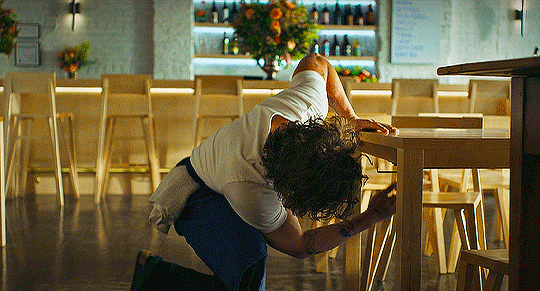
Started off with making sure she's comfortable
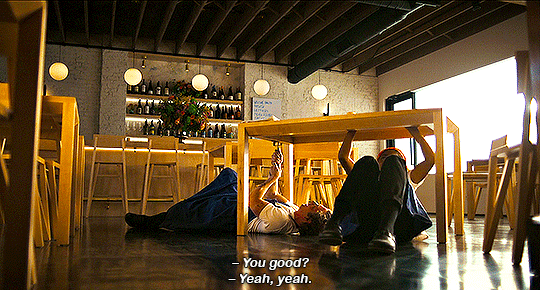
Reassuring her that he wants her

Switching positions
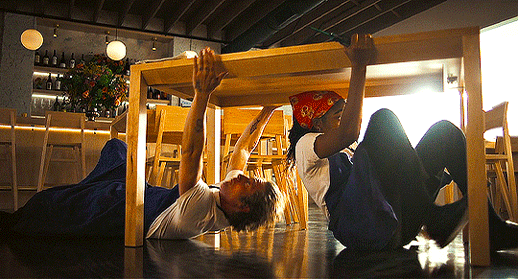
Sweet talking her and telling eachother how much they like each other






Dirty talking (about food)


Finishing and start pillow talking and reassuring her that he's there for her no matter what


Getting up all disheveled and fixing her clothes


Giving her clothes to put on

#they're so unserious#sydcarmy#the bear#carmy x sydney#sydney adamu#carmen berzatto#chefs kiss#platonic and messy#the bear fx#charged and sexy#screwing under the table#the bear meta
720 notes
·
View notes
Text




Mending my sins and finally catching up with lights of Avalon!!!1!! @alkalinefrog
I swear kai your characterization of everyone is so perfect and charming UGH it’s like falling in love with them all over again
Huge special shoutout to @bignostalgias for being the bulk of the inspo for their designs! Hic, jack, jame, and em designs are next <3
#lights of avalon#hijack#there are so many drawable scenes SO MANY#tooth is written so fuckin good what#ASTRIANA SWEEP#bunny actually caring about everyone’s well being brings tears to my eyes#the big brother dynamic w jack is chefs kiss#SANDY#always always a sandy kinnie#WHEN HE FLIPS THE TABLE#also I kid you not the moment the smallest of descriptive details about Jamie came up I exploded#THATS HIM#MY SON#I’m on ch 8 rn#I have many things to talk about w/ my disaster gays in a separate post#toothiana#bunnymund#rotg
892 notes
·
View notes
Text
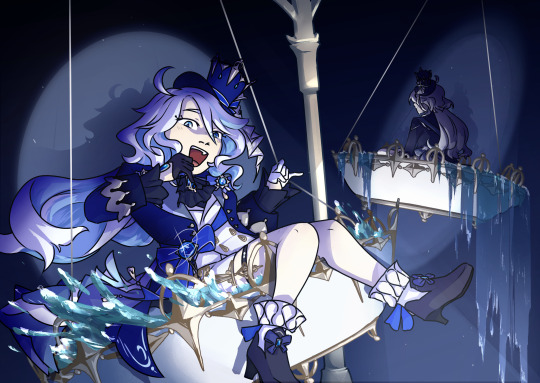
gee I sure hope nothing bad happens to the archon of true crime! (finally rendered this WIP)
#alternatively archon of being fine and secure and competent (real)#ashjbdjas. i'm really obsessed with the ''lady furina sitting at the judges table'' fontainan idiom#they literally don't respect her. and I love that for her (character)#her EN va's performance... chef's kiss#my art#genshin impact#furina#...may or may not be printing some of these. haha jk. unl
686 notes
·
View notes
Text


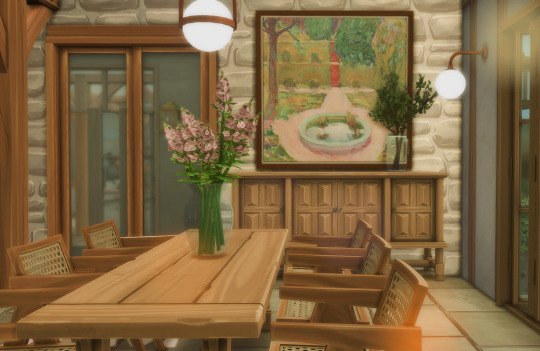
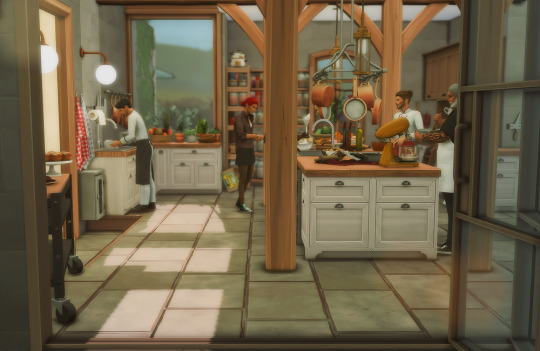



Busy day ahead at Green Hill at Bagley Barns
before | next
#ts4#the sims 4#sims 4#sims 4 screenshots#sims interior#sims 4 interior#sims kitchen#hmm very tempted to call this story bit: Chef's Table#or would this be 'too on the nose'?#rotational gameplay/story#*mine#I've always wanted to do a prof. kitchen story lol (my parents had a restaurant so I do have some bg)
229 notes
·
View notes
Text
REAL
REALER

#The tides are changing and more people are seeing the vision#vindication!#Chris Storer needs to explain himself before a judge and jury if they’re platonic#That damn table scene lord#How will they top them whispering sweet nothings under a table….#…ON THE CLOCK might I add#also the vast difference between Sydcarmy discourse on Tiktok vs IG is astronomical#They’re so nasty on IG#sydcarmy#chefs kiss#carmy x sydney#syd x carmy#the bear#charged and sexy
319 notes
·
View notes
Text

I can't explain this, but Black women looking young is somehow being added to the convenient excuses to not ship Black women with popular white leading men but ~not in a racist way~
She's strong and independent, she doesn't need him
He's a mess, she can do better
She should be gay! or with minor Black side character!
NEW: She looks so young :(
I'm obviously picking on this particular person but I've seen several people dismiss SydCarmy because "he's a much older, mentor figure! that'd be inappropriate!" And like??? HUUUUH???
Sydney and Carmy are an absolute MAX of 5 years apart in age. And while Ayo looks beautiful, 19 she does not look! Sydney went to culinary school and has worked at several fine dining establishments before launching her own business, common sense says she's at least in her late 20s. And while Carmy has more restaurant experience, he was a literal prodigy who started young.
ALSO, this is kind of an aside but where the fuck is Carmy mentoring Sydney in any real capacity?
S1 - she gets hired, 2 days later she was like "hey I redid your entire business plan because your shit is fucked, a day later he asked her to lead the brigade and then ditched her. He went to cater Cicero's party with Richie and once again Sydney was in charge DURING A POWER OUTAGE. She quit mid-service, comes back, and he's like want to start a restaurant with me?? Not as a fucking mentee, as a partner
S2 - Sydney is making the construction timeline decisions and present and participating in financial/loan conversations with the literal owners of the Beef/Bear. Sydney is part of designing the menu. Sydney is hiring. The only mentor-mentee relationship she's in is with TINA!
Does Sydney look up to Carmy because he's in many ways accomplished her culinary dreams? Absolutely. But people acting like she's some bright eyed student he's teaching to dice onions is fucking crazy.
#anyway i'm yelling#the bear fx#sydney adamu#carmy berzatto#sydcarmy#everyone is just so predictable and annoying#there was another reddit post#where the OP was like 'im 21 and my boss is in his 30s and i hate when people imply there's something romantic between us'#and i had to PHYSICALLY restrain myself from being like 'well sweetie#like do you spend a lot of time in your boss' apartment or looking into each others eyes under tables?#is he buying you custom designer chef wear?#no?#fucking ok then#let's get back to this fictional fucking show then shall we#this really feels so tenmartha in the worst way
282 notes
·
View notes
Text
i would, hand to god, watch 4 straight hours of carmy and claire to get 90 more seconds of a scene like this between carmy and sydney like guys are we hearing and seeing this??????
they have zero real competition, i’m so sorry.
#the bear fx#the bear#the bear spoilers#carmy x sydney#chefs kiss#carmy berzatto#sydney adamu#like they’re under a table upside down and have this CRAZY crackling tension ?????
916 notes
·
View notes
Text
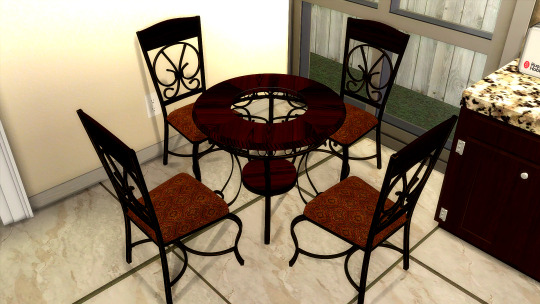
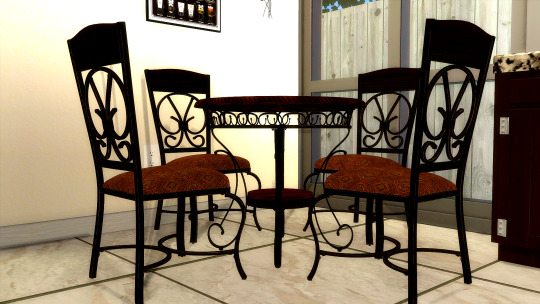

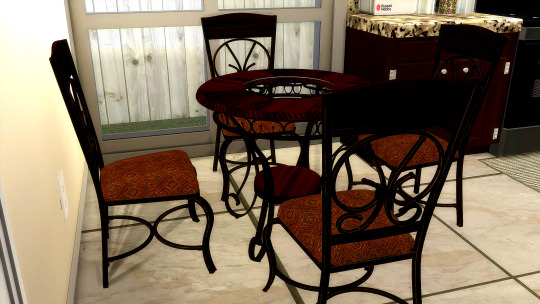
Dining Table & Chair Set CC
NOW PUBLIC!!
Base Game
Download: Patreon
#ts4cc#sims 4 custom content#ts4#sims 4 simblr#ts4 simblr#the sims 4#sims 4 cc#sims 4#simblr#the sims cc#sims 4 home chef hustle#functional cc#dining cc#dining table#dining chairs#base game cc#home decor
288 notes
·
View notes
Text
there really is not a single unlikeable character in abbott elementary huh
333 notes
·
View notes
Text
The bench will come in handy in s3


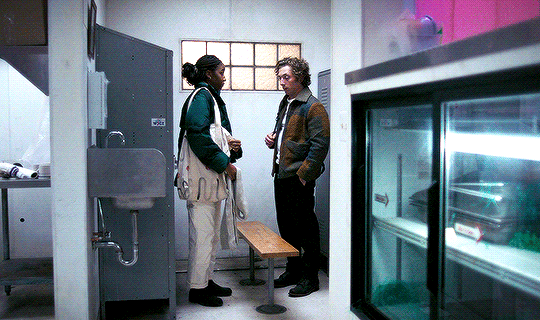
#We have not seen the last of that bench#In season 1 we had the milk crates - first base#In season 2 we had the table- second base#In season 3 we will have the bench- third base#Yep they are doing the nasty in s3#sydcarmy#sydney adamu#carmen berzatto#carmy x sydney#syd x carmy#sydney x carmy#carmy x syd#chef's kiss#syd x carmen#the bear
143 notes
·
View notes
Text
Under the table


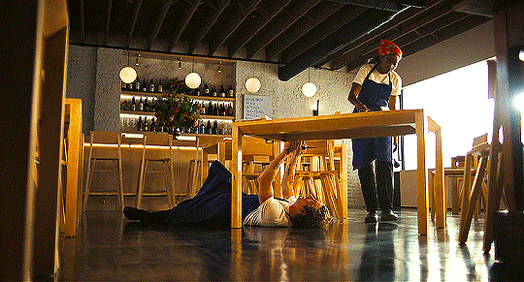


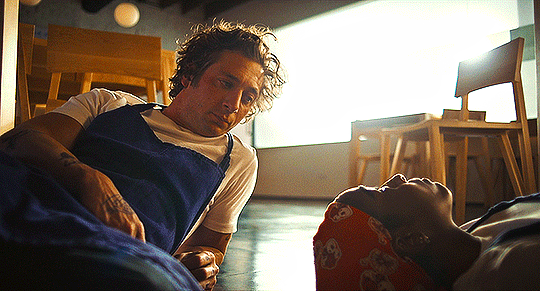
totally normal for platonic coworkers to have to converse in secret because they feel like they're doing something wrong
#cheating on his girlfriend with his wife#sydcarmy#platonic and messy#charged and sexy#the bear#chefs kiss#sydney adamu#carmen berzatto#syd x carmy#carmy x sydney#the bear fx#screwing under the table#the bear meta
467 notes
·
View notes